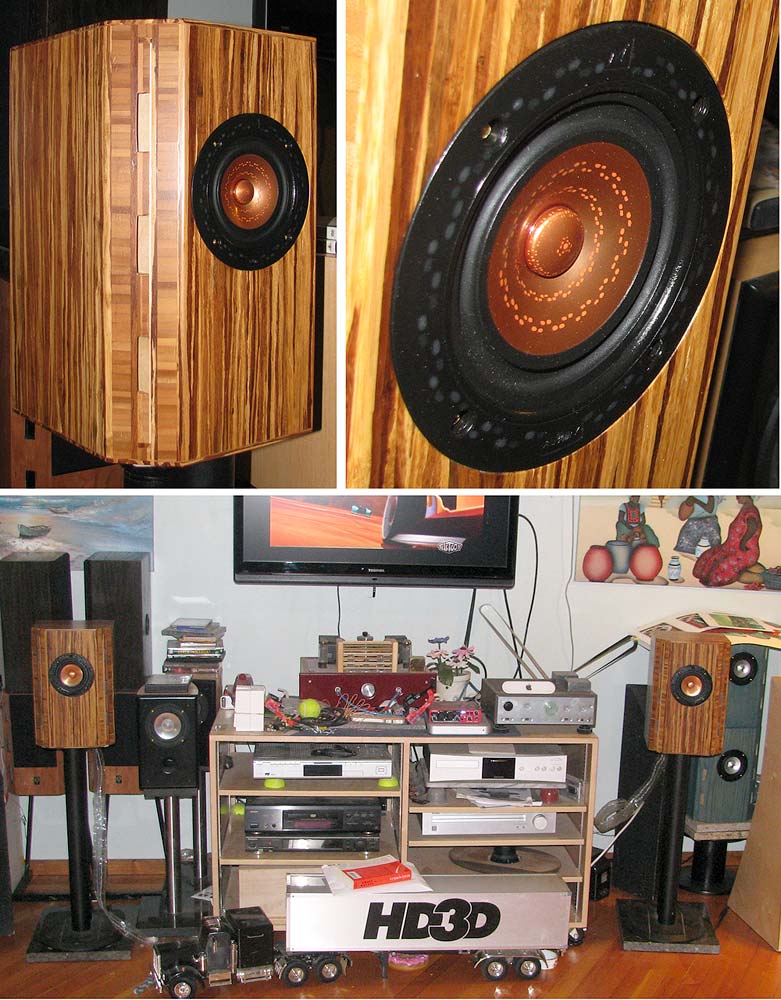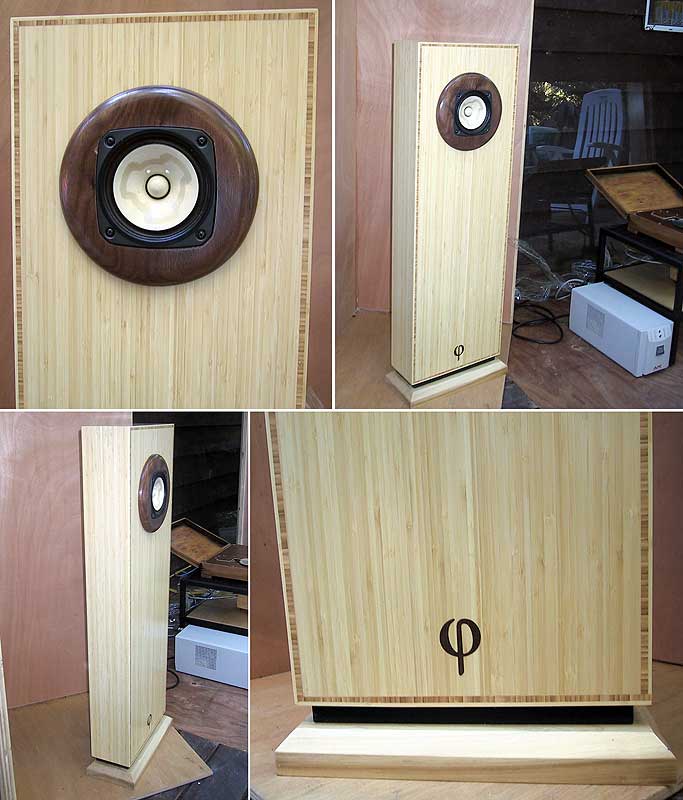Material............................Stiffness (Modulus of E).................Damping Factor
Laminated Bamboo Lumber....1,500,000 psi..............................0.2 (good damping)
Bamboo comes in many different types.Best is the fossilized/stranded variaeties of the plywood. 2 surface layers of strands of bamboo in somesort of plastic/epoxy, sandwhiching an inner core of bamboo blocks glued together.
PlybooStrand Bamboo Plywood and Veneer | Plyboo
I imagine that the veneer is the surface layer…it would be interesting to take a 100-ton press and make some plywood of just that veneer. And i see no reason it couldn’t be grown/made anywhere using hemp fibre instead of bamboo.
https://www.plyboo.com/sites/all/files/downloads/PlybooStrand_Plywood_CSI.doc
Sorry, they only have a word file.
dave
On the face of it bamboo looks like a good option. I have seen however lamination issues with this material. Not good. To be clear, this was bamboo ply/lumber core. Gluing this material up into panels must be a work in progress.
Last edited:
Like plywood & MDF there are lots of variation in quality. You have to buy the good stuff. And it is not cheap (3 or more times the cost of similar thickness MurphyPly)
dave
dave
Hard to do if a distributor changes supplier. Glue up of panels isn't rocket science. I'm thinking the bamboo does not like certain glues (incompatible) or some bamboo has more/less compatibility issues with adhesives. I'll wait till they get their act together.
Regarding gluing bamboo the best glues are used by bamboo fly-rod makers...google is your friend!
Another factor regarding bamboo is that to be more rigid it needs to be pre-baked. Again, a good search regarding bamboo rod makers will help gain knowledge. Commercial preformed sheet contains a large percentage of the soft pithy fibre from the inner regions of the pole...This stuff destroys the integrity of the panel by reducing its potential to possibly be a superb material for cabinet construction. Also, because of the elastic nature of the wood, I am confident that extra well designed internal bracing - probably from Baltic Birch - to maximise any real advantage in choosing bamboo.
Another factor regarding bamboo is that to be more rigid it needs to be pre-baked. Again, a good search regarding bamboo rod makers will help gain knowledge. Commercial preformed sheet contains a large percentage of the soft pithy fibre from the inner regions of the pole...This stuff destroys the integrity of the panel by reducing its potential to possibly be a superb material for cabinet construction. Also, because of the elastic nature of the wood, I am confident that extra well designed internal bracing - probably from Baltic Birch - to maximise any real advantage in choosing bamboo.
To be clear, this was bamboo ply/lumber core. Gluing this material up into panels must be a work in progress.
I've made a few things by laminating 5mm single layer bamboo onto regular plywood.
I chose this (rather than using a single all-bamboo panel) because:
- It is cheaper.
- It is forgiving (a) 5mm is an extremely thick 'veneer', which allows a lot of rounding / smoothing / fixing of mistakes.
- It is forgiving (b) you can put the inner box together without worrying about aesthetics (drill holes, sloppy joins). The skin layer hides everything.
- It is forgiving (c) you don't have to measure the skin layer perfectly. I cut each panel sightly too big, then trimmed them flush after it is glued down.
- When you start with full size sheets, moving and cutting two thin panels is less work than moving and cutting a thick one.
The main oddities of working with the bamboo are that it is less absorbent than ply (of water or glue), harder than ply, doesn't flex at all, and splinters differently.
Getting a bamboo splinter in your finger is like getting spiked by a very fine sliver of glass.
Material............................Stiffness (Modulus of E).................Damping Factor
Laminated Bamboo Lumber....1,500,000 psi..............................0.2 (good damping)
Corian.................................1,400,000 psi..............................0.04 (little damping)
Baltic Birch Plywood..............1,100,000 psi..............................0.04 (little damping)
MDF.......................................450,000 psi..............................0.02 (little damping)
FWIW, over however many years [decades?] we've 'debated' construction materials I've periodically asked Ga-Pacific the MOE for 3/4" BB ply, MDF in case there were any changes due to new regulations/whatever and always it's 1,800,000/~527,000 psi.
I'd like to think that it's at least 'universal' in the USA, but have never checked.
GM
That Georgia-Pacific MOE for 3/4 Baltic Birch plywood of 1,800,000 is very high. More likely for hardwood core plywood. The 527,000 MOE for their MDF is possible for a high grade of MDF.
A short list of material stiffness, modulus of elasticity (psi)
Hickory............................2,200,000
Oak.................................1,900,000
Hard Maple.......................1,800,000
Douglas Fir.......................1,800,000
Phenolic X Grade...............1,800,000
Ash.................................1,700,000
Beech..............................1,700,000
Bamboo...........................1,500,000
Corian.............................1,400,000
Pine................................1,300,000
Fiberglass Comp, Woven....1,200,000 - 1,700,000
Baltic Birch Plywood...........1,100,000
Fiberglass Comp, Mat...........700,000
HDF...................................700,000
Epoxy Resin........................450,000
Particle Board......................450,000
MDF...................................350,000 - 450,000
Polycarbonate......................260,000 - 380,000
Plexiglass............................250,000 - 450,000
A short list of material stiffness, modulus of elasticity (psi)
Hickory............................2,200,000
Oak.................................1,900,000
Hard Maple.......................1,800,000
Douglas Fir.......................1,800,000
Phenolic X Grade...............1,800,000
Ash.................................1,700,000
Beech..............................1,700,000
Bamboo...........................1,500,000
Corian.............................1,400,000
Pine................................1,300,000
Fiberglass Comp, Woven....1,200,000 - 1,700,000
Baltic Birch Plywood...........1,100,000
Fiberglass Comp, Mat...........700,000
HDF...................................700,000
Epoxy Resin........................450,000
Particle Board......................450,000
MDF...................................350,000 - 450,000
Polycarbonate......................260,000 - 380,000
Plexiglass............................250,000 - 450,000
I'm familiar with the material. In retirement, closest I'm going to get to bamboo will be perched on a Mai Tai.I've made a few things by laminating 5mm single layer bamboo onto regular plywood.
I chose this (rather than using a single all-bamboo panel) because:
I'm not a rocket surgeon, or a perfectionist. I don't have a 100 ton press. I just use lots of regular PVA, with weights + clamps. It has worked well so far, not really different to laminating ply+ply or ply+MDF, or whatever.
- It is cheaper.
- It is forgiving (a) 5mm is an extremely thick 'veneer', which allows a lot of rounding / smoothing / fixing of mistakes.
- It is forgiving (b) you can put the inner box together without worrying about aesthetics (drill holes, sloppy joins). The skin layer hides everything.
- It is forgiving (c) you don't have to measure the skin layer perfectly. I cut each panel sightly too big, then trimmed them flush after it is glued down.
- When you start with full size sheets, moving and cutting two thin panels is less work than moving and cutting a thick one.
The main oddities of working with the bamboo are that it is less absorbent than ply (of water or glue), harder than ply, doesn't flex at all, and splinters differently.
Getting a bamboo splinter in your finger is like getting spiked by a very fine sliver of glass.
- Home
- Loudspeakers
- Multi-Way
- BB Ply vs MDF vs Corian

